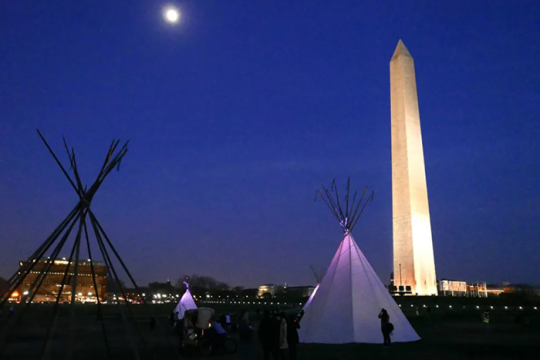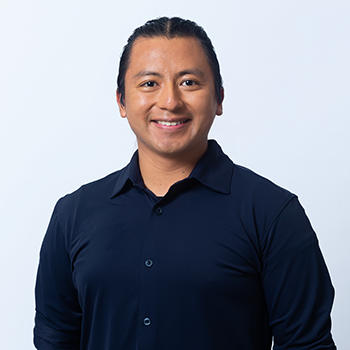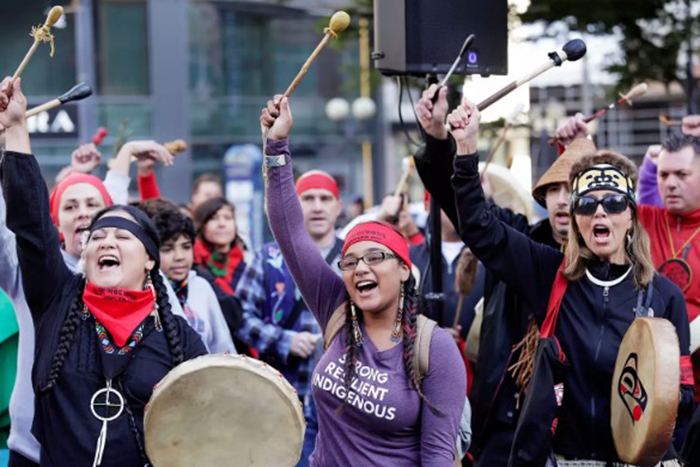
One theme central to the month of Kislev is emerging from the struggle to survive. Jewish legend holds that it was in the month of Kislev that a rainbow appeared following the great flood in the time of Noah, that the Mishkan (Tabernacle) was built, and that the foundation stones of the Second Temple were laid. Kislev is also the month of Hanukkah, which marks the Maccabees' victory for religious freedom and self-rule. Each of these Kislev moments represents an important milestone in the history of the ancient Israelites in our timeless struggle to emerge from times of hardship to times of prosperity and safety. Kislev invites the Jewish people to shine light on and address oppression wherever it exists. This includes working alongside other marginalized communities who struggle to emerge from oppression and move to lives of prosperity and safety.
The struggles of Indigenous North American communities have often centered on access to and use of their tribal lands. This deep connection to a homeland is one that resonates with the Jewish story. It took years for the Jewish people to find a land that was our own - one of safety, security, and freedom. The Jewish people have been exiled and uprooted from our homes many times throughout our history. We've experienced tremendous suffering and existential threats to our religion and culture, in addition to those of us with intersectional identities who experience threats on multiple fronts. Our history and ongoing experiences help attune our community to the struggles of other communities. Guided by our belief that every person is made in the image of God, we understand the need to protect the human rights of all people, particularly those who are most vulnerable: "the widow, the orphan, the stranger, [and] the poor" (Zechariah 7:10). Today, we must pay more attention to the sustained oppression Indigenous communities face and their struggle to survive.
I look back to November and the celebration of Native American Heritage Month. Similar to Kislev, Native American Heritage Month is rooted in the challenges to a community's survival. Indigenous communities throughout North America were uprooted from their homes and forced to assimilate. From 1912-1915, Dr. Arthur Caswell Parker (Gawasco Waneh) of the Seneca Nation and Cattaraugus Reservation persuaded the Boy Scouts of America to celebrate a day for "First Americans." Though people continued to fight for the recognition and citizenship of the Indigenous population, it wasn't until 2008 that President George W. Bush established November as National American Indian Heritage Month, which became Native American Heritage Month with President Barak Obama's proclamation in 2009. Still, the institution of Native American Heritage Month has not eradicated the injustices that Indigenous people face.
In 2019, the Canadian government published a report documenting violations of First Nations' rights, including the imposition of residential schools. In the same year in the United States, Arizona Governor Doug Ducey signed legislation to create a commission comprised of law enforcement, family members of victims, and tribal leaders to investigate and address these human rights violations in the United States. The Not Invisible Act of 2019 was the first bill to be introduced by four members of federally recognized tribes and was passed in 2020. As the lives of Indigenous women and girls continue to be threatened, more must be done to fully address the ongoing missing and murdered indigenous people's (MMIP) crisis throughout North America. In May 2022, the U.S. Department of the Interior (under the first Native American secretary, Deb Haaland), released its first report investigating the Federal Indian Boarding School Initiative . This was the first bill to be introduced by four members of federally recognized tribes and was passed in 2020. As the lives of Indigenous women and girls continue to be threatened, more must be done to fully address the ongoing missing and murdered indigenous people's (MMIP) crisis throughout North America. In May 2022, the U.S. Department of the Interior (under the first Native American secretary, Deb Haaland), released its first report investigating the Federal Indian Boarding School Initiative .
Governmental action to support the Indigenous community should be celebrated, but it is up to us as citizens and Jews to influence further action. Today, the challenges we face are intrinsically related to the injustices experienced by our neighbors. We must ensure that the Indigenous population today has a home that is safe and secure. We must use our own history and experiences to guide us in the pursuit of justice for all people. We must help ensure the journey of the Indigenous community is one that is supported, celebrated, and recognized.
You can support the Indigenous community by reading and learning more about the Indigenous North American experience through media that focuses on centering Indigenous voices. There are several online resources where you can learn more about the journeys and experiences of the North American Indigenous community. The Museum of Jewish Heritage and the Smithsonian National Museum of the American Indian have worked together to present a conversation with Sarah Podemski and Emily Bowen Cohen in Intersections of Identity: The Jewish Indigenous Experience. If you're interested in art and literature from Indigenous creators, the National Museum of the American Indian has curated several online exhibitions on their website, and Portland Community College has gathered a collection of e-books and audiobooks, videos, poetry and websites that detail the Indigenous experience. You can also visit Cultural Survival , an Indigenous-led Non-Governmental Organization, to learn about land acknowledgments, hear from Indigenous voices, discover Indigenous-owned businesses and non-profit organizations that you can support, and more.
By listening to and supporting Indigenous people, a number of whom have intersecting identities as Jews of Color, we will better understand our world and our ability to pursue justice for all marginalized groups. In Kislev and throughout the year, we should work alongside Indigenous people to help create a society that treats all people with respect and equity.
Related Posts
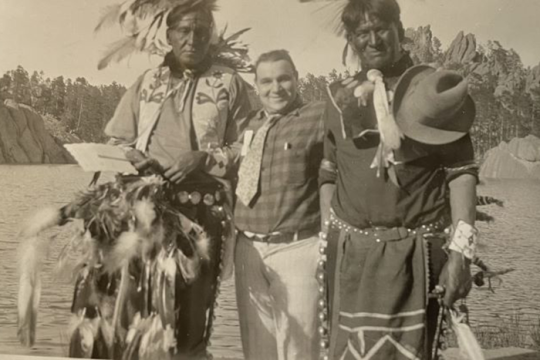
The Cost of Free Land
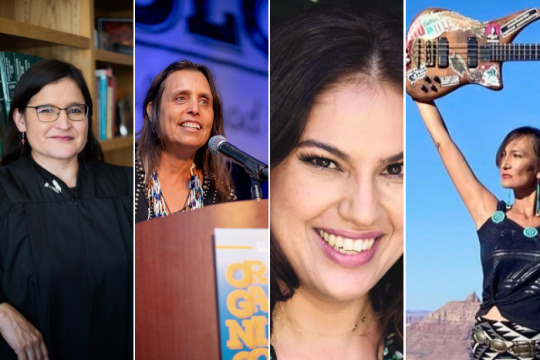
Indigenous Jewish Women Making an Impact
